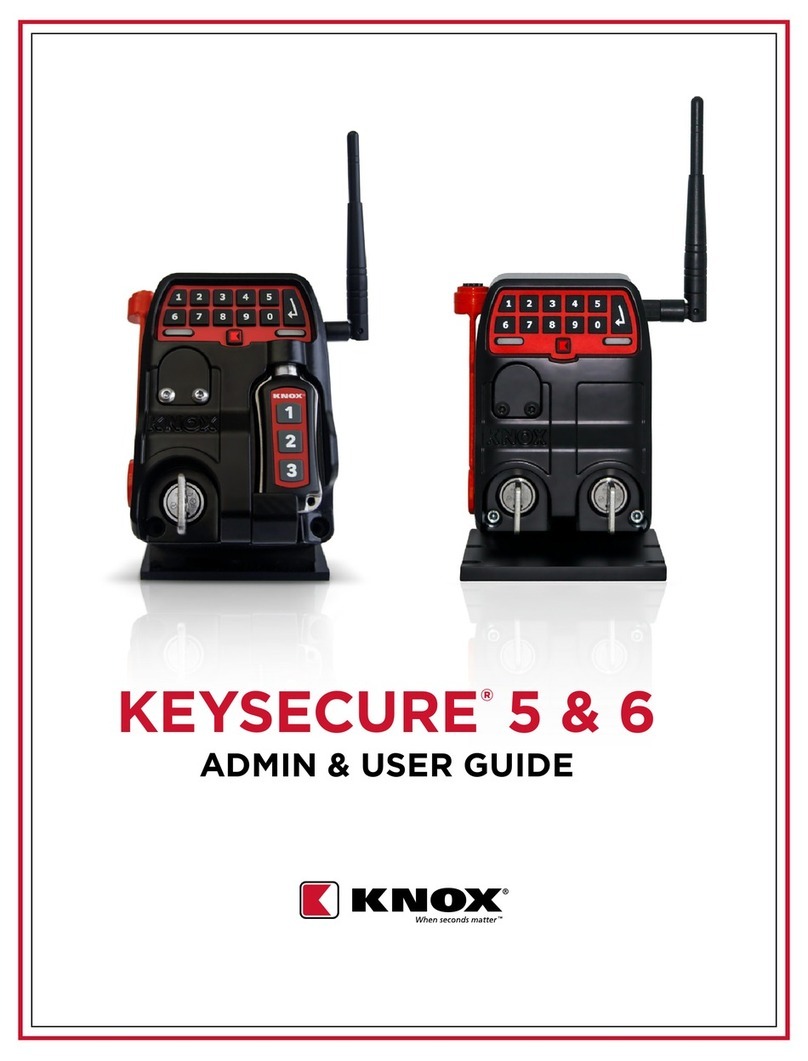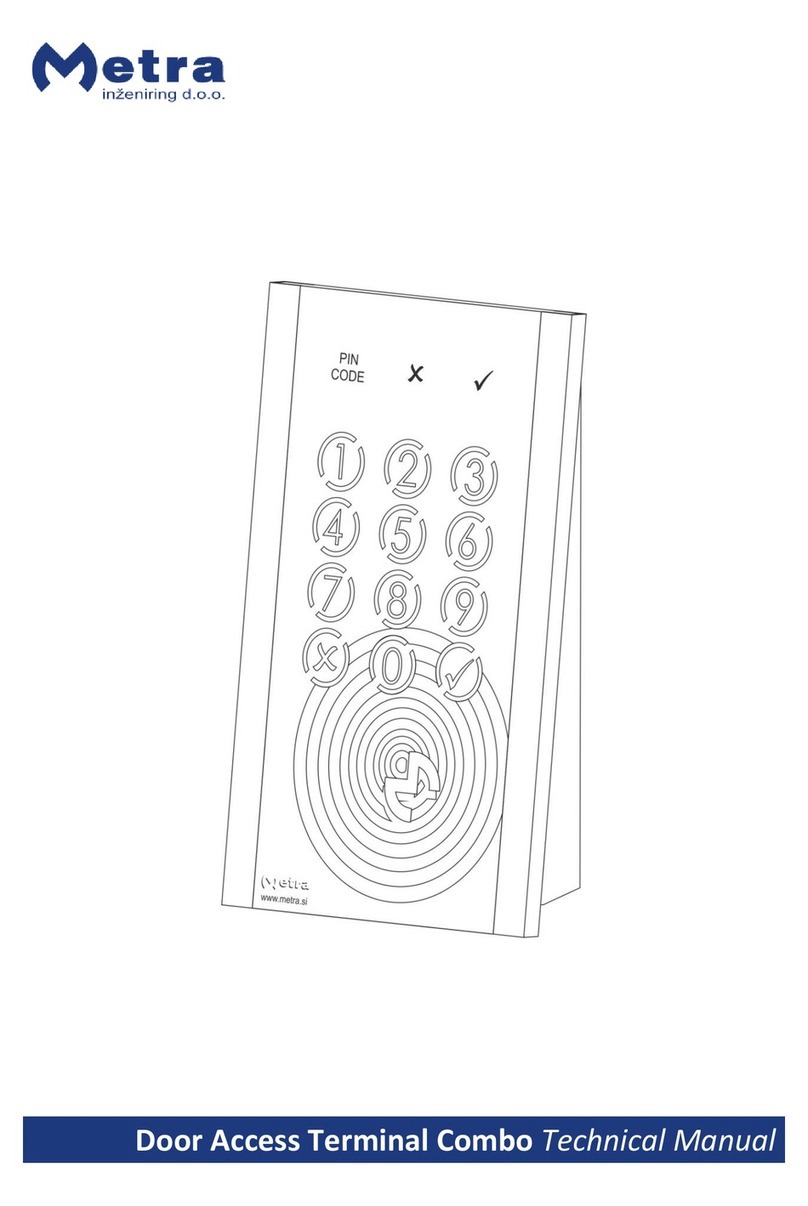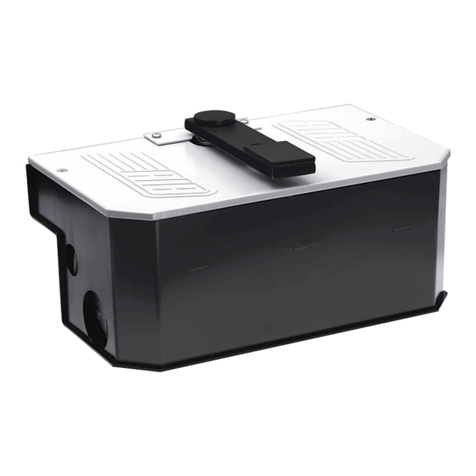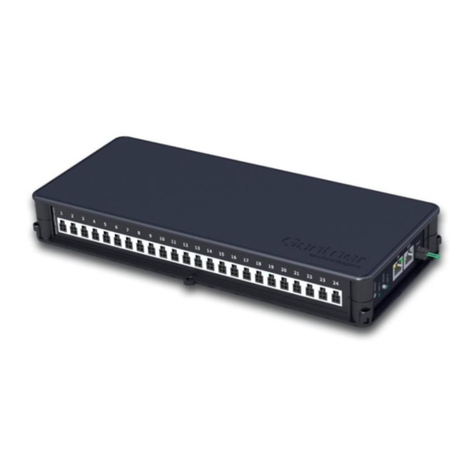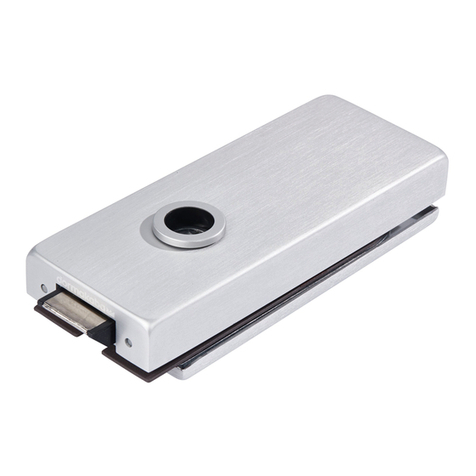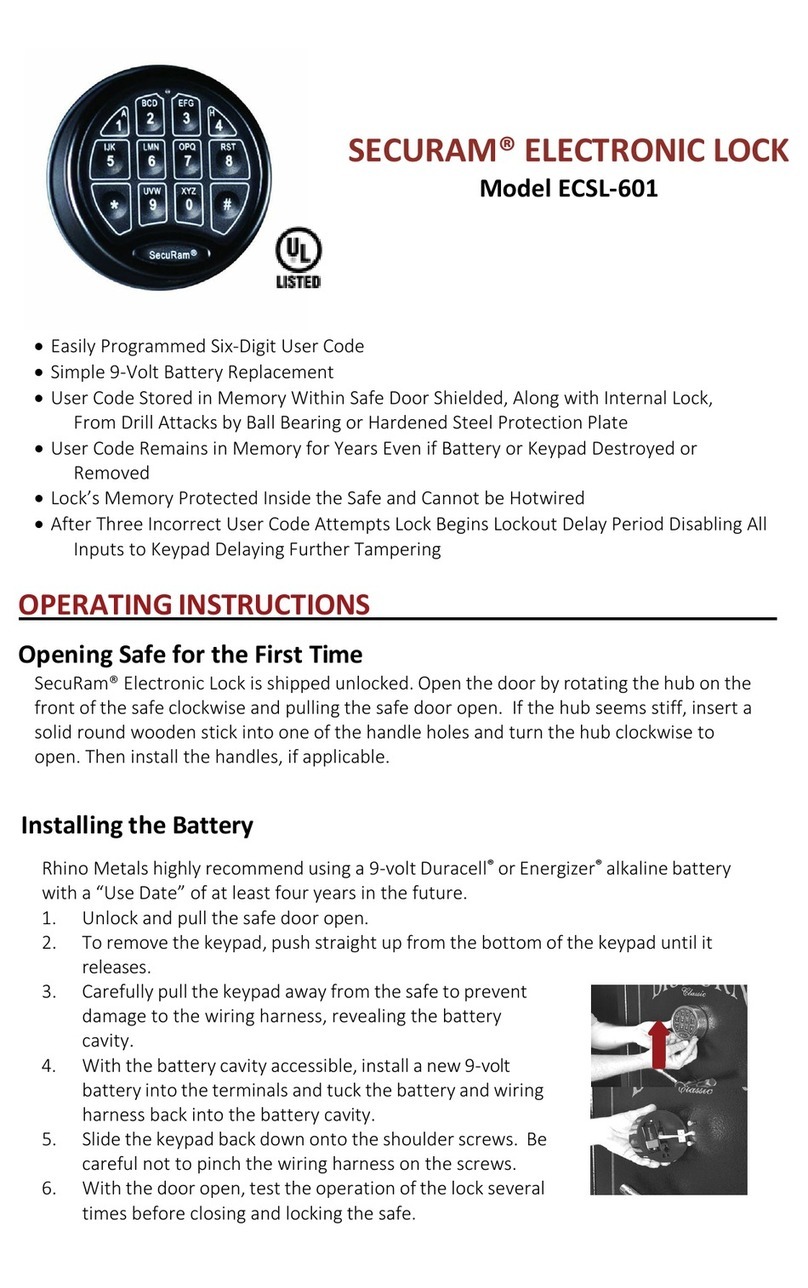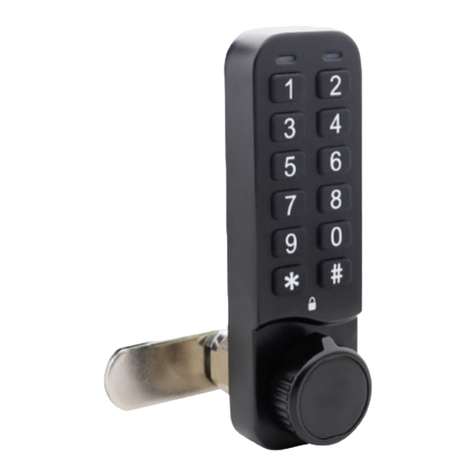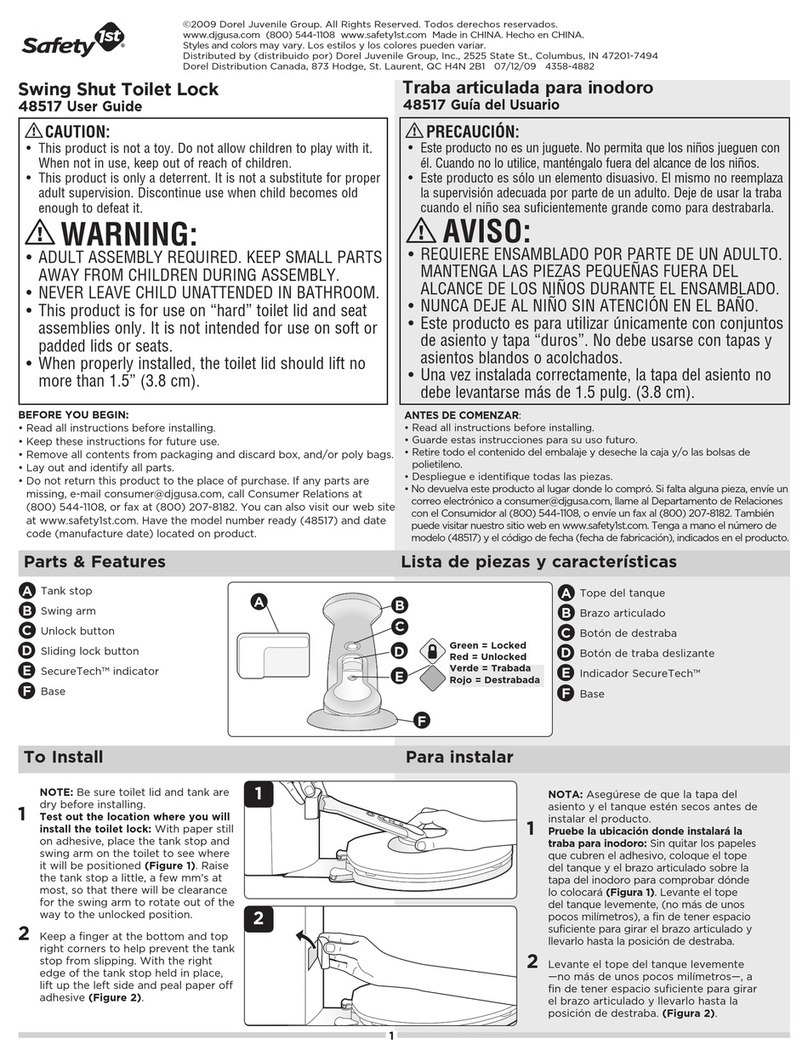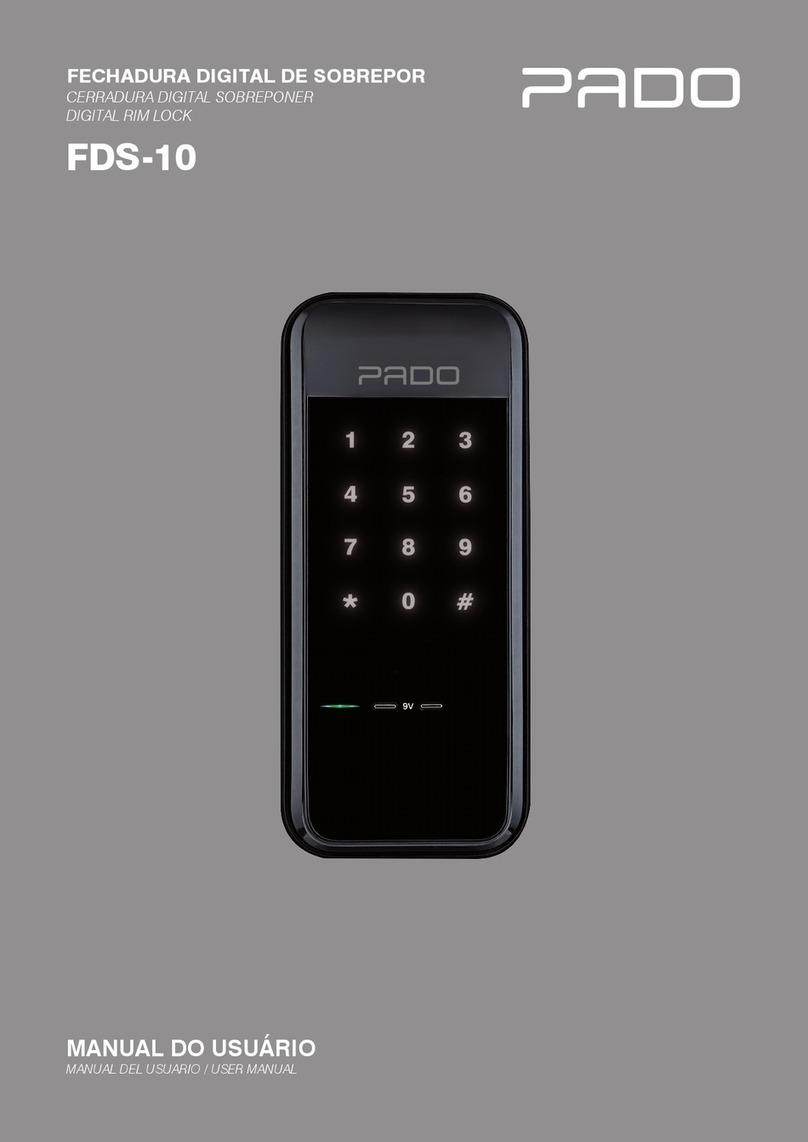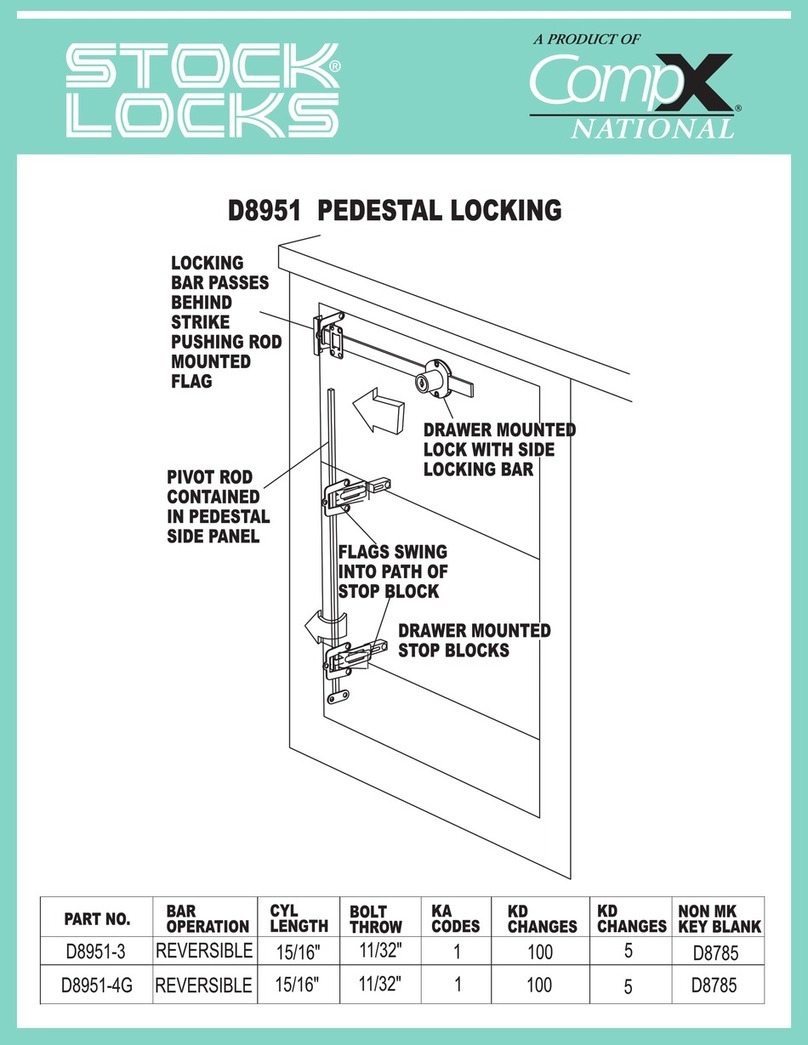
SP1083600 Motor-Driven Blocking Device EasyLock Installation Manual 7
Cautions
•Clean the hole before installing the blocking device.
•When screwing in the flange fixing screws, pay attention to the position of the
cable so that you will not damage it with the fixing screws.
•When installing the blocking device on an emergency fire door, please check
which structural measures are allowed so that the door will not lose its
certification.
Assembly of the counterpart
The counterpart is assembled in the door leaf. It needs to be assembled in a way
that the locking bolt can extend to the limit stop without contact. The maximum
distance between the flange and the counterpart amounts to 5 mm. This way, it is
guaranteed that the locking bolt will move far enough into the counterpart.
Assembly steps:
1. After having installed the blocking device, connect it to the test device (for the
connection plan, refer to “Connection to SP1083220 test device” on page 10).
After powering (for example, using an accumulator) the blocking device will
open automatically.
2. Glue the assembly aid (adhesive felt) on the locking bolt of the blocking
device and color it using an ink pad.
3. Close the door.
4. Lock the blocking device using the test device. The locking bolt will extend.
After several locking trials the locking bolt will move back since it cannot
reach the end position.
5. Open the locking device by using the test device.
6. Open the door.
7. On the door leaf you can recognize a color circle which shows the exact
position of the counterpart.
8. Mark the center using a center punch and drill the hole according to the
counterpart. For the installation dimensions of the counterparts refer to the
technical data sheet (see also “Specifications” on page 17).
9. Assemble the counterpart.
10.Close the door and perform a functional check using the test device (see also
“Commissioning” on page 12).
Caution: When installing the blocking device on an emergency fire door, please
check which structural measures are allowed so that the door will not lose its
certification.


